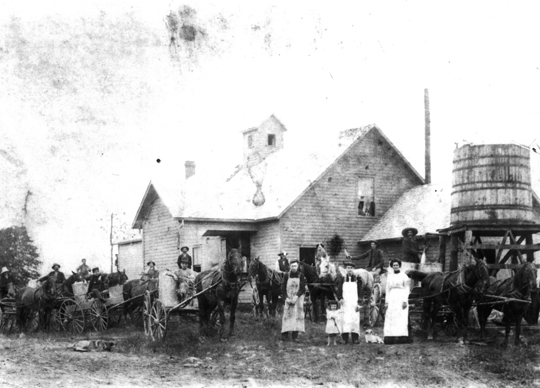In the last blog I discussed cisterns as one source of water for the occupants  of Patterson Village. There were three other sources although one of these related to the post-Village occupation of Houses 17 and 18 by farm-hands working the agricultural fields of this farm.
of Patterson Village. There were three other sources although one of these related to the post-Village occupation of Houses 17 and 18 by farm-hands working the agricultural fields of this farm.
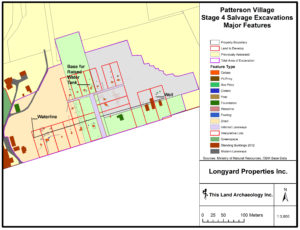
Figure 1
A second source of water was a well lined with yellow brick. It was located about 20 m northwest of House 18. We excavated the upper portion of this well by hand and then had the gradall section the well with its bucket. The well was 1.5 m in diameter and almost 5 m deep (Figure 1, Plate 1). We recovered over 1,700 artifacts from the well which were generally similar to those found in the cisterns and cellars we excavated.
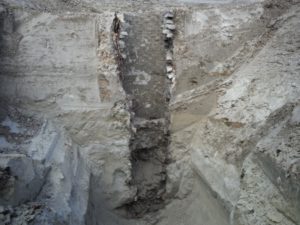
Plate 1
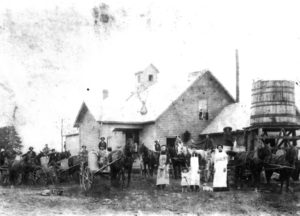
Plate 2
I found the most intriguing source of water from what I inferred to be a raised water tank. The base of this inferred water tank was comprised of nine large post moulds in a rectangular pattern found to the northeast of House 5 (Figures 1 and 2 ). Archival research discovered a historical photograph of a 19th century
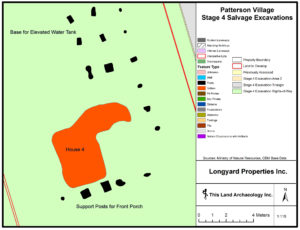
Figure 2
farmstead with a water tower located beside the house (Plate 2). This was comprised of a large wooden tank supported by posts. This supports our interpretation of this post pattern as the base of such a water tank.
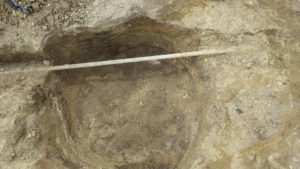
Plate 3
The final source of water was a galvanized metal pipe which carried water from Patterson Pond to Houses 17 and 18. There are historical documents indicating that water was provided to the manufactory by means of a waterline and a hydraulic ram, a type of water pump. We found this waterline which ended behind House 18 after extending 330 m east from a northwest-southeast line which had been partly destroyed by the farming of the site. This waterline transected one of the cisterns (Plate 3) indicating it was constructed after the filling-in of this cistern after the abandonment of the Village.
I hope you’re enjoying the Our Lands Speak series. If you know someone else who would enjoy this blog, feel free to share it. We also welcome your comments and feedback.
Sincerely,
Bill
William D. Finlayson, Midland, Ontario
Ontario’s Leading and Senior-Most Archaeologist and Author
